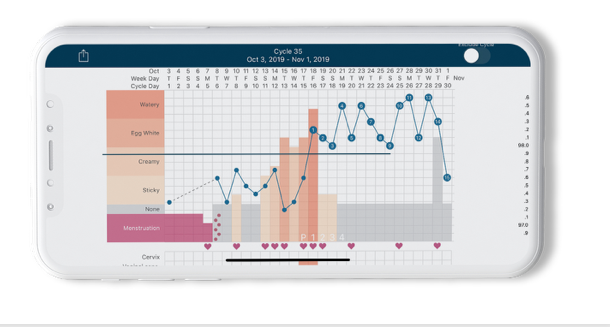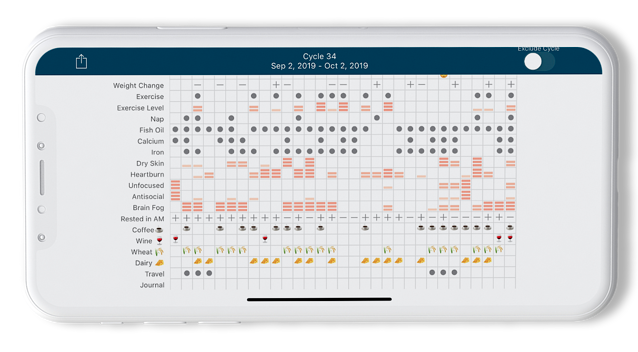Temperature Tracking for Hormonal Health: Why Basal Body Temperature?
- The Facility Denver

- Aug 16, 2020
- 4 min read
Updated: Oct 27, 2020
by Kate Daugherty, M.S., Functional Nutritionist

Basal Body Temperature charting is used to analyze your monthly cycle, predict your fertile window, and broadly evaluate your reproductive health.
The basics of charting involve taking your temperature daily and mapping the data to track ovulation, the length of your menstrual phases (follicular, luteal) and any cyclical symptoms that show up related to hormone changes.
What is BASAL BODY TEMPERATURE (BBT)?
BBT is your body’s resting temperature measured upon waking. The temperature should be taken immediately following (a minimum of) four hours of uninterrupted sleep and before getting out of bed.

For accurate charting, you should set an alarm for the same time daily, and keep your thermometer accessible by your bed. This is a minor inconvenience for a wealth of information!
Oh, and just FYI: BBT can be measured orally, vaginally, or rectally- but oral is just as reliable for charting purposes!
There are other signs that can be used in conjunction with BBT to analyze your monthly cycle. Cervical fluid, Cramping/pain/tenderness, and PMS symptoms can all indicate different phases of the menses.
The best comparison for what is "normal" is your own cycle month-over-month. The more data you have, the more you can analyze what is affecting your day-to-day symptoms.
WHAT IS AN OPTIMAL CYCLE?
“Normal” is hard to define in terms of a menstrual cycle. The best comparison is your own cycle month-over-month. However, the textbook definition of normal is a 28-day cycle with ovulation occurring on Day 14.
Most women have BBT between 97.2°F - 97.8°F during the follicular phase, and from 97.8°F to 98.6°F after ovulation during the luteal phase. Temperature will drop again just before your period begins.

The first day of your period is the first day of your chart (and considered Cycle Day 1, or CD1). Generally, during the low-hormone phase (menstruation) your body temperature is at its lowest.
As a new egg matures, the ovaries produce estrogen, a trophic hormone. Estrogen helps to rebuild uterine lining should the egg be fertilized and need a place to implant. Around Day 13-14, the brain produces Luteinizing hormone (LH) which signals the ovary to release the egg (ovulate).
Ovulation marks a transition from follicular phase to luteal phase. Its onset is spurred by the spike in Luteinizing hormone (LH). After the egg is released, the leftover follicle produces progesterone. Progesterone is a thermogenic hormone, causing elevated basal temperatures. You will see a spike in temperature, around 0.5°F or higher. A sustained elevation in temperature confirms ovulation.
Your temperature should stay elevated for 10-14 days post-ovulation. As the corpus luteum from the leftover follicle dissolves, progesterone release slows and eventually ends. Without progesterone, BBT drops, and you begin our menstrual phase.
In a natural cycle, you will see clear differences in the temperature ranges between the Follicular Phase (Days 1-14) and the Luteal Phase (Days 15-30).
WHAT IS THE FERTILE WINDOW?
The egg is only viable for fertilization for a few days while it travels from ovary, through fallopian tube. Ideally, sperm will be waiting in the uterus for the release of an egg (note that the cervical fluid produced around ovulation allows the sperm to live inside for a few days). Thus, you can become pregnant with unprotected sex up to 5 days prior to ovulation AND 3 days after. The Fertility Awareness Method (FAM) is useful for estimating the fertile window, but because of sperm viability it can be quite unreliable as a method of avoiding unwanted pregnancy. A backup method should be used during this window.
HOW DO I CHART ?
There are specific basal thermometers that register a greater range of temperatures and more precisely measure (within two decimal points). While a number of high-tech thermometers are on the market (Daysy, Ava, Priya); a basic BBT thermometer works the same, is inexpensive, and found at your local drugstore, or online.
Body temperature should be recorded daily, either old-school on paper or using a fertility charting app. My favorite app is Kindara. The temperature charts can be very easy to analyze month-to-month and a number of other metrics can be recorded. Plus, you can easily share with me as your practitioner for help in analyzing your temperature changes.
WHY CHARTING HELPS
You may expect that your menstrual cycle is fairly “normal”- periods come every 28-30 days. However, tracking temperatures can help illuminate when ovulation is occurring (early vs late, or AT ALL); how long you are in each phase (short luteal phase is VERY common post-birth control); or irregularities in the cycle from month to month (ideally, ovulation alternates from right to left ovary).
Once you see these patterns, we can address WHY they might be occurring and HOW they are affecting fertility. [For example, a short luteal phase can indicate low progesterone which decreases uterine lining health (endometrium) and may inhibit embryo implantation.]
THINGS THAT AFFECT TEMPERATURE (via HORMONES)
There are a number of factors that can alter our reproductive hormones, and cause a change in temperature. This includes:
poor quality sleep
alcohol or stimulant consumption
poor nutrition
& significantly: stress.
However, the more data points you collect, the more you can predict what is positively/negatively affecting your day-to-day swings.

BBT charting can be used as a preventative measure, to prepare your body for a healthy pregnancy, and ultimately to better plan conception.
My recommendation? Fertility and hormone balance starts with understanding the full picture of what is going on. No matter if your goal is avoiding pregnancy, conceiving, or simply having more predictability around your period/moods, having data to understand the patterns is paramount. Charting is inexpensive, non-invasive, and simple. Why not try it out?

----------

Want to work with a functional nutritionist to personalize your diet? Struggling with hormone imbalance, IBS, weight gain, mood changes? Let's look at FOOD FIRST. Read more about Functional Nutrition at The Facility here.
CLICK HERE to schedule a FREE 15-Minute Nutrition Consult with Kate to determine your best course of action!




















Comments